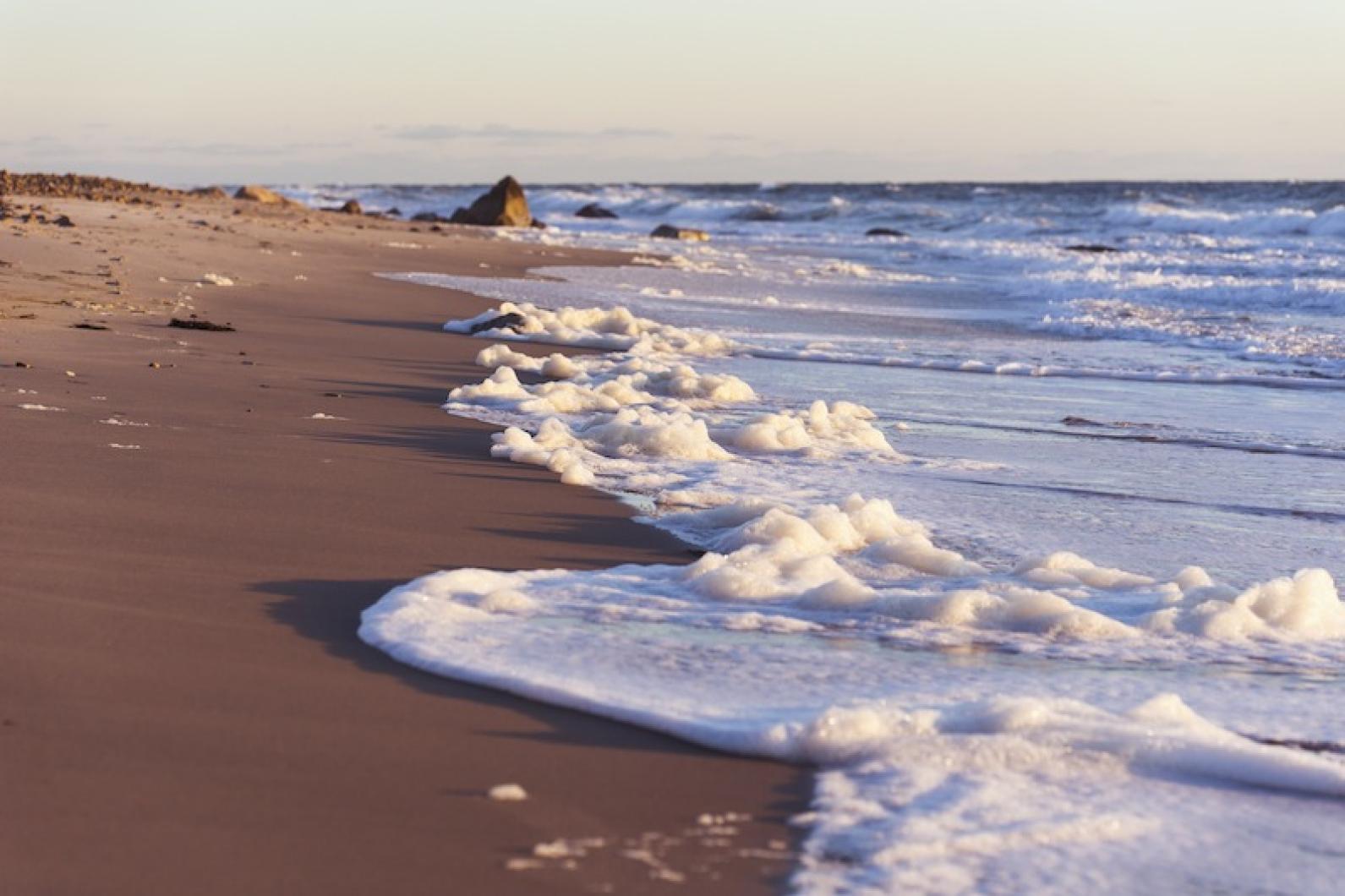From the Jan. 5, 1940 edition of the Vineyard Gazette:
As often as the high courses of autumn tides run, and the fall gales breeze from any point of the compass, beachcombing and hiking come into season with the Islanders. There is neither time nor incentive to hike the beaches in summer, when mild weather and low tidal courses leave the sands undisturbed for weeks except for the narrow margin washed by the wind ripples. But when fall and early winter winds whip the Sound and ocean into running, foaming seas that break upon the beach with a roar that sends the gravel rolling, then is the Vineyarder’s beachcombing season.
Many the articles that have been written on this subject. Many the discourses delivered, informally and otherwise, and yet the subject is always new because the beaches are never twice the same. Within the lapse of a few months, sometimes a few weeks, the entire appearance of a familiar beach may be altered. So moves the Island, growing, shrinking, as the case may be, but apparently always moving slowly eastward through the erosion of the western extremities and the shoaling of the eastern waters.
The signs of the times, the march of progress and even the existence of war in the world may be traced on the Vineyard, strange as it may seem. Older inhabitants will say that there is nothing to encourage beachcombing today, and that is true insofar as material gain is concerned. There was a time, easily recalled, when to walk on the beach meant that one would find many things of some value cast up by the tide. Sticks of timber, boards, shingles and laths; perhaps portions of wooden wrecks bearing hardware of bronze or iron; all lawful plunder to the beachcomber who walked that way in anticipation of such discoveries. Much more was to be found if a wreck occurred in any nearby vicinity, and many were the cartloads of salvaged flotsam and jetsam that were hauled from the Vineyard beaches.
But all that has changed and in that change have occurred strange occurrences as logged by the beachcombers.
There was the period when the beaches were littered with tin cans and jars, the rubbish of a great city dumped into the sea. There was a period when a short quarter-mile of beach would yield scores of liquor bottles and dozens of electric light bulbs. There was nothing of value among such objects, yet there was a curious pleasure in picking them up, looking at them and wondering where they might have been thrown overboard.
But the beach of today, Vineyard Sound beach, presents a new appearance. There are the fragments of new lumber, fastened together with iron nails; portions of concrete forms, used and cast aside somewhere about new construction work. Traces of the cement still cling to these boards and the type of construction is easily identified even without this evidence. There are odd bits of fishing gear, lost from the decks of fishing craft, but this is not the same type of gear that was formerly found. It is heavier and adapted to fishing in open, offshore waters. Automobile tires are always to be found; a mark of the times, certainly, but nothing to do with highway traffic. These tires, condemned by auto owners, are used as tenders by fishermen. Lost overboard, they are driven ashore by the sea, to bewilder the uninitiate who find them there.
Today’s beach lacks the windrows of eel grass and rockweed, once so common on the shores. In its place there is a tangle of roots and branches, still remaining from last year’s hurricane. Erosion of the banks and cliffs has been much more rapid since the hurricane, and there are more rocks slipping from the banks and more land-slips which bring down quantities of soft dirt and clay. Portions of signal rockets, tattered flags and an occasional fragment of wood, reveal the activities of naval craft in not-too-distant waters. This is the clue to war conditions that are to be found on the beach.
There is a strange unfamiliarity in the appearance of this beach of today. The old landmarks are gone. The once prominent points have been lopped off cleanly as by a knife, and once smooth sandy beaches are gravel strewn. Cliffs there are, but not in the same places as of yesterday; those older ones have shrunken, fallen in many places. New ones have appeared, where former hills have been cut through.
Only the sea, rolling in, rearing its foaming crests, curling and breaking with its hearty roar, seems unchanged. No rafts of weed darken its surface, no logs, capsized boats or litter of driftwood can be seen. But the same clean, vigorous regularity and therein lies the charm of the beach.
Perhaps, when the process of tearing down has been completed, the sea will rebuild, in part, the shores it has destroyed. It appears that this sort of thing has occurred in the dim past, and when that shall occur again, then the beachcomber may again have his day.
Compiled by Hilary Wall
library@mvgazette.com






Comments
Comment policy »